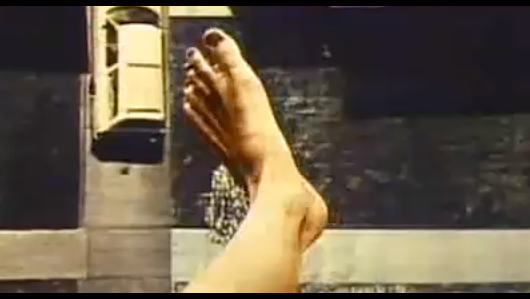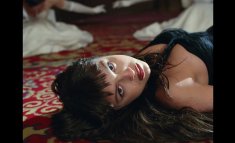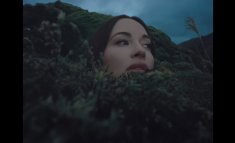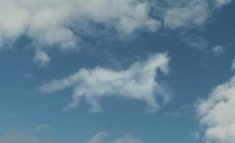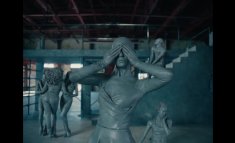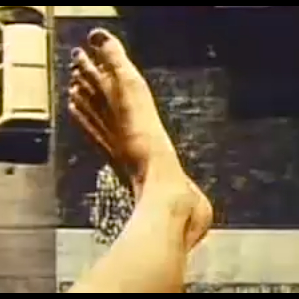by Stephen Pitalo, The Golden Age of Music Video
Few directors from the Golden Age of Music Video (1976-1993) established a trademark as unique as Portland filmmaker/photographer Jim Blashfield. He used groundbreaking Xerography with a cheeky wink, sweetly reflecting his subjects and repurposing ordinary objects as tools for lyric migration. Through an eye for texture and surrealism, these 'handmade' music videos emerged when Talking Heads frontman David Byrne recognized something in Blashfield’s style and hired him to create an amazing video for "And She Was". This opportunity would lead him to direct clips for Paul Simon, Tears for Fears, and eventually Michael Jackson.
We spoke with Blashfield about that first video, as well as how a future Oscar-nominated Portland filmmaker got involved.
Q: When you made your first film, what made you send that to the Talking Heads?
A: When Talking Heads came through Portland and did their "Stop Making Sense" show, I had seen it. And I was a big fan, but more than a fan, I felt what a lot of people felt -- a kind of connection to Talking Heads’ point of view or aesthetic. I found the music to be interesting and David Byrne would create his own idea of what kind of person can be a popular musician – someone who seems on the surface not to be that, a person who just functioned with so much integrity, and transformed what it could be. And I liked that.
Q: I can see how that would be running parallel to your unique filmmaking.
A: One of the things that became evident was our interest in the ordinary. When Talking Heads started, they’d appear at CBGB’s in school clothes. If you look at the videos, they were so simple and often showed an understanding and respect for the most ordinary things —things around us, like one album cover that had an overturned chair. It was stuff I was equally interested in. I liked where it took me lyrically as well. It may be that Melissa, my partner, may have sent off [Blashfield’s film] to their management, maybe without telling me. I might have been reluctant to do so, thinking, "Why would they be interested in me?" I was shy about it. And then this phone call came a few days later, saying David Byrne wants to talk to you. These were the first things of scale that I’d been involved in at all.
Q: How was it working with him on "And She Was?"
A: When you’re going to collaborate, you don’t really know how much freedom you’ll have. Will they really want to get in there and tell you what they want or what to do? There was such a short production schedule on this – I think we had 28 days – and David was busy making his film True Stories. He had some sketches and he sent them to me. They looked just exactly like -- I was working with a guy named Don Merkt, and the boards we did reinforced his initial ideas. When I talked with David, I asked, "How do you want to proceed?" and he said, "Well, just go ahead and do it." "You mean, just go ahead?" "Yeah, that would be best, wouldn’t it? Don’t you think?" and I said, "Yes."
Q: What is your process you are doing when you create these? You said you put things between glass plates, are you shooting stills, or movie film?
A: Basically, you can see the black and white sequences for David’s lip synch — those are shot on 16mm film. But all the rest were photographs. I’d set up a still photograph, like when David holds his head up. I’d take a picture, then we’d do another pose, so we’d do about ten pictures of his head moving. Then we’d take those slides, put them in the photocopy machine, actually going down to the photocopy place, and bring those back, and we had people cut them out with Exact-o knives. It’s funny, I think the only copy machine we could use was the color Xerox machine, and it had just come out in the past few years, and it was something that artists loved!
Then we went around to garage sales on a Saturday, and took pictures of things that we liked. Some of them were just one still, "oh, look at this!", but then there’s that shot above the houses that we had to do on a crane, and for that we rented a crane, and it was kind of terrifying. I remember the crane was raised as I took one still after another of the scene below. Bunches of things were shot, skies too, and then a trip to the thrift store. We were all kind of on the same page. Look at that statue! Take a picture, or bring it home.
Q: Did the band members come out to Oregon to shoot their parts?
A: No. They were scattered around. I went down to Dallas, where David and his production company had a place. It was a house, or they were shooting there or something. Jerry was in Minnesota or Wisconsin. And Chris and Tina were down in the Bahamas. So I went down to see David, and we shot the still photography and a little recording for lip-synch, off a tape recorder. Only with David Byrne would I feel comfortable saying, "Hey, we’re going to record your lip-synch with this camera stacked on top of these boxes, and you’re going to lip synch it in front of this ball." But that’s what we did.
Q: Was this the session when Gus Van Sant was working with you?
A: This was the point where Gus was just like the rest of us, looking for work. We thought, who would be good to send off to shoot these other band members? Oh, maybe Gus! He said yes, hopped on a plane, went to where Jerry was and went to where Chris and Tina were, and did those photo sequences with the slide camera, and then brought those back.
Learn more about his work and his memorable video for Nu Shooz's "I Can't Wait" at the Golden Age Of Music Video Blog [by Stephen Pitalo, The Golden Age of Music Video]
